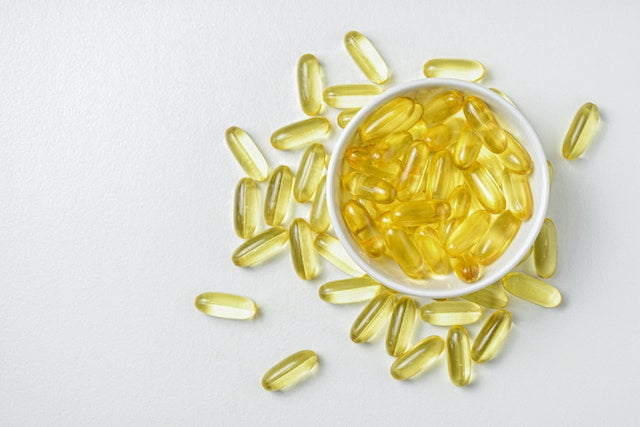Vitamin D is lowest in the winter, our skin’s ability to produce vitamin D decreases, and we are at an increased risk for low vitamin D levels. Humans need vitamin D, which plays a vital role in immune function, bone health, and more. While we can get some vitamin D from our diet, the best way to get vitamin D is through exposure to sunlight.
However, during the winter, there are fewer daylight hours, and the weather is often colder, which makes it challenging to get outside. As a result, our vitamin D levels can drop, and we may be at an increased risk for deficiency. There are a few ways to get more vitamin D in the winter, such as taking supplements, eating foods that are high in vitamin D, and having sunburn also make vitamin D.
The Risk of Vitamin D Deficiency
Due to the UK’s geographical position and lack of sufficient sunshine for half of the year, everyone should be cautious of their vitamin D consumption throughout the winter. Even said that there are a few variables that increase the risk of vitamin D deficiency and low vitamin D levels.
Babies are a high-risk population because some are born with low vitamin D levels, and others cannot gain enough through breast milk, according to the BDA. Because it impacts calcium levels, vitamin D deficiency can harm the bone growth of newborns and children. They can develop rickets, a disorder characterized by slowed bone health, bone abnormalities, fractures, fits, and discomfort.
On the other hand, in adults, vitamin D insufficiency can induce exhaustion and a variety of aches and pains in the ribs, lower back, hips, pelvis, thighs, shin bones, and feet. Hairline fractures are not rare, defined as a little break or bruise on the bone.
Where can you get Vitamin D?
Vitamin D is known as the “sunshine vitamin” because it is produced in the skin following exposure to sunlight. The UVB photons that cause sunburn also produce vitamin D. Sunscreen, darker skin tone, clothes, and shorter days in winter diminish the skin’s ability to make vitamin D. Fair-skinned persons living in northern parts of the United States and at higher latitudes across the world where there is very little sunshine in winter see the most significant seasonal changes in vitamin D levels.
People of color and those living at higher latitudes are more likely to have low vitamin D levels. Dark-skinned people are more likely than fair-skinned people to be vitamin D deficient all year because their darker skin prevents UVB rays from making vitamin D. Even in those with dark skin, vitamin D levels are lowest in the winter.
People should boost their vitamin D intake in the winter with meals and supplements to obtain at least 600 IU of vitamin D each day. People with dark skin or who avoid sunlight should consume additional vitamin D all year.
Vitamin D and Sunlight
The connection between vitamin D production and sunlight is clear; the more we receive, the more vitamin D our bodies produce. The quantity of sunshine we get in the UK throughout the summer allows most of us to create healthy amounts without thinking about it. This is excellent news since vitamin D is essential for our health. Humans with naturally dark skin require 3-6 times more sun to produce vitamin D than people with light skin. It also depends on the color of the skin.
Children require sunlight on their skin for their bodies to produce vitamin D. This accounts for almost 80% of their vitamin D intake. Scientists aren’t sure how much sun children need to get enough vitamin D., But we know that the quantity of sun your child requires varies depending on where you live and the year’s season. The functions of vitamin D in immune cells, as well as bone, dental, and muscle health, are essential. Everyone should aim to spend some time outside in the sun every day while being sun-safe and avoiding sunburn.
How to Increase Your Vitamin D Consumption
The key to increasing vitamin D levels throughout the winter is a mix of good health behaviors, such as combining the correct meals with vitamin D pills. Here are some vitamin D-rich foods. “Oily fish, such as salmon, sardines, and mackerel, is the most acceptable source. Egg yolks, red meat, some mushrooms, and fortified items such as spreads, yogurts, and morning cereal are other good sources. It is difficult to obtain sufficient vitamin D from food alone, but including these foods in your diet will assist.

Vitamin D supplements, on the other hand, can make all the difference in the winter. But remember that supplements will only be beneficial if combined with a healthy, balanced diet and time spent outside. Official standards recommend a daily supplement of 10 micrograms. Babies under one year’s age require less, between 8.5 and 10 micrograms, unless they consume more than 500 ccs of enriched formula milk daily.
Multivitamins and vitamin D supplements are commonly accessible in supermarkets, health food stores, and pharmacies. They can also come in various flavors, such as flavored chewable sweets, making them more attractive to children. Pregnant or nursing women and children aged 6 months to 4 years may be eligible for ‘Healthy Start’ vitamin D supplements.
Conclusion
In conclusion, Vitamin D helps your body absorb calcium, so helping your body absorb calcium helps keep your bones strong. However, your body makes vitamin D from sunlight, and the sunlight isn’t always plentiful in the snow, so getting some vitamin D in the winter might be an excellent way to make sure your body has enough.
FAQs
Which type of vitamin D is best for winter?
While all Vitamin D is an excellent thing to add to your diet, natural sunlight or supplements are the best sources. The Vitamin D Council says that 1,000 IU of Vitamin D3 a day is the recommended dosage.
Is there a difference between vitamin D and D3?
Vitamin D has two forms: vitamin D2 and D3 (cholecalciferol). Vitamin D2 is derived from lanolin, while vitamin D3 is synthesized from cholesterol.
What are the signs you need vitamin D?
Low vitamin D levels are linked to many health problems, from high blood pressure to mental illness. Vitamin D deficiency is also known to cause muscle pain, weakness, bone pain, and digestive problems.
Is it OK to take vitamin D3 every day?
Vitamin D3 is fat-soluble, and the amount your body makes depends on the season. So, it is recommended that Vitamin D3 only be taken as prescribed by your doctor.
How can I increase my vitamin D3 naturally?
You can increase your vitamin D3 naturally by exposing your skin to sunlight for 10–15 minutes daily.








